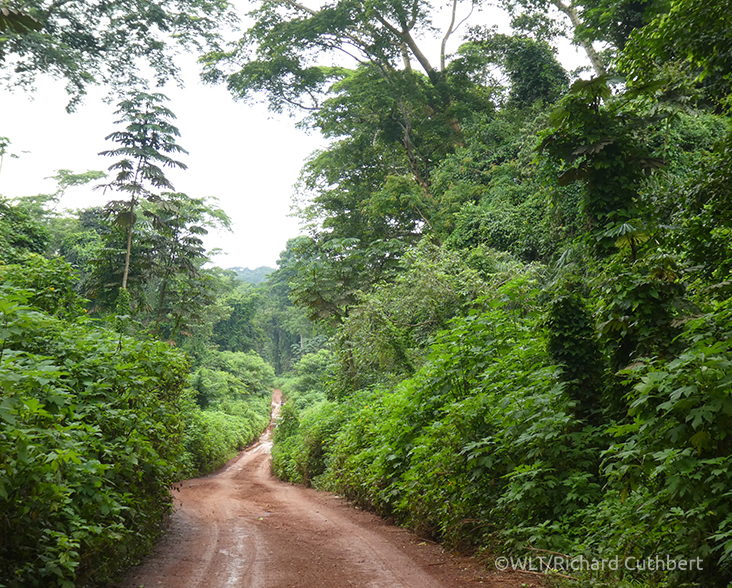Cameroon has a rich biodiversity due in large part to its multiple biomes, including savanna, desert, and tropical rainforests. It provides habitat to 9,000 known plant species, with over 500 of these being endemic to the country. This includes several orchids species located on the fertile ground of Mount Cameroon, an active volcano and the highest mountain in West and Central Africa (4,000 metre asl). Cameroon contains part of the world’s second largest tropical rainforest, the Congolian rainforest.

CAMEROON
Years of Support 0
HECTARES FUNDED 0 (5,945 acres)
The tropical forests of Cameroon are also a vital part of the Congo Basin forest ecosystem. One of the most biodiverse countries in Africa, over 300 mammal species and 900 species of bird have been recorded. Cameroon is also characterised by its extraordinary cultural diversity and is home to over 250 ethnic groups.
Cameroon has one of Africa’s highest deforestation rates, losing some 220,000 hectares of its forest per year. Though mostly caused by logging and agriculture, an increasing area of rainforest and cloud forest are cleared for rubber and oil palm plantations.
Our partners in Cameroon
Current projects in Cameroon
Deng Deng - Belabo Corridor
Explore the Deng Deng – Belabo Corridor with our interactive map
Deng Deng NP – Belabo Council Forest Corridor Community Conservation area
This project focused on the creation of two community forest reserves to preserve a vital corridor between Deng Deng National Park, a large Forest Management Unit and Belabo Council Forest in Eastern Cameroon. The Deng Deng lies within one of the largest and most biodiverse conservation landscapes in Cameroon and falls within the Congo Forest High Biodiversity Wilderness Area.
These reserves are comprised of the 5,000-hectare Kebo Community Forest and the 2,406-hectare Ademkepol Community Forest. Support from local communities and the Divisional Delegation of Forestry and Wildlife for Lom and Djerem has been integral to this project.
The Kebo Community Forest and Ademkepol Community Forest contain a mosaic of habitats including swamps, dense evergreen forest, secondary forest, shrub land, grassland, agroforestry and small areas of farmland gardens. The project ensures that the forests in these habitats have a future free from deforestation or fragmentation. In so doing, threatened species like Western Lowland Gorilla, Chimpanzee, African Forest Elephant, and two species of pangolins (Giant and White-bellied) are provided with high quality forest habitat and can move unhindered across existing protected areas.
Rapid forest conversion compromises the future of the forest in the project region, which experiences forest loss from illegal timber harvesting and removal of trees for subsistence farming.
Awareness raising has formed a core part of this project, and ERuDeF has worked with local communities and indigenous peoples belonging to four ethnic groups, Kepere, Bobolis, Pols and Deng Deng. The cultures and traditions held by these people are closely linked with the forest. In addition to indigenous people, the forest provides resources important for the livelihoods of immigrants from within Cameroon and refugees from the Central African Republic. ERuDeF have been working with these groups to implement their Education for Sustainable Development Programme to enhance local capacity to effectively use natural resources and protect the environment.

Key species protected by WLT projects
-
African Leopard (Panthera pardus pardus)
-
Chimpanzee (Pan troglodytes)
-
Giant Ground Pangolin (Smutsia gigantea)
-
Grey-necked Rockfowl (Picathartes oreas)
-
Grey Parrot (Psittacus Erithacus)
-
Hippopotamus (Hippopotamus amphibius)
-
Western Lowland Gorilla (Gorilla gorilla ssp. gorilla)
-
White-bellied Pangolin (Phataginus tricuspis)
